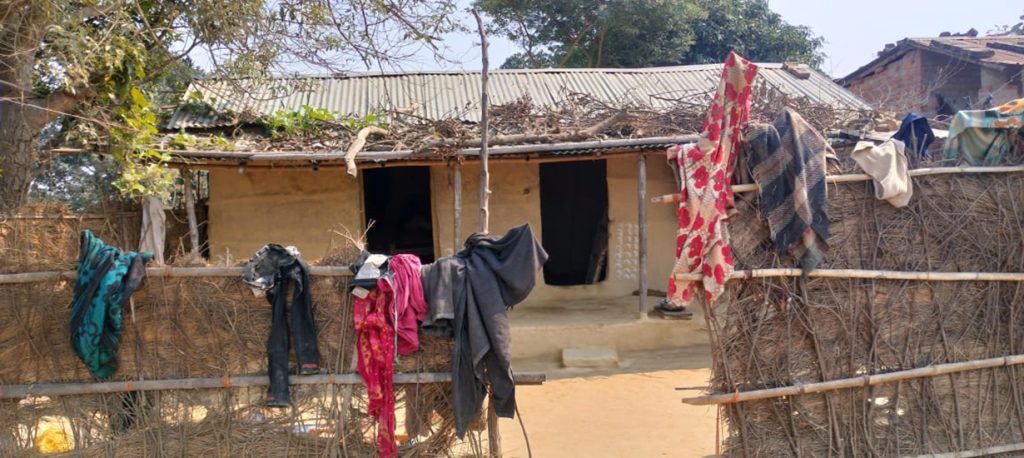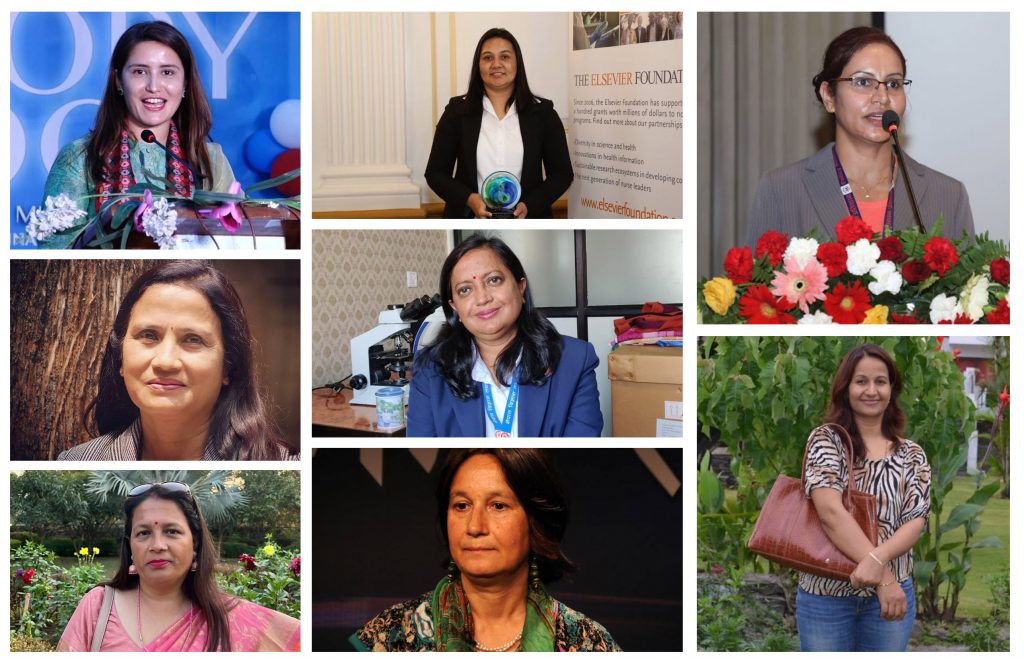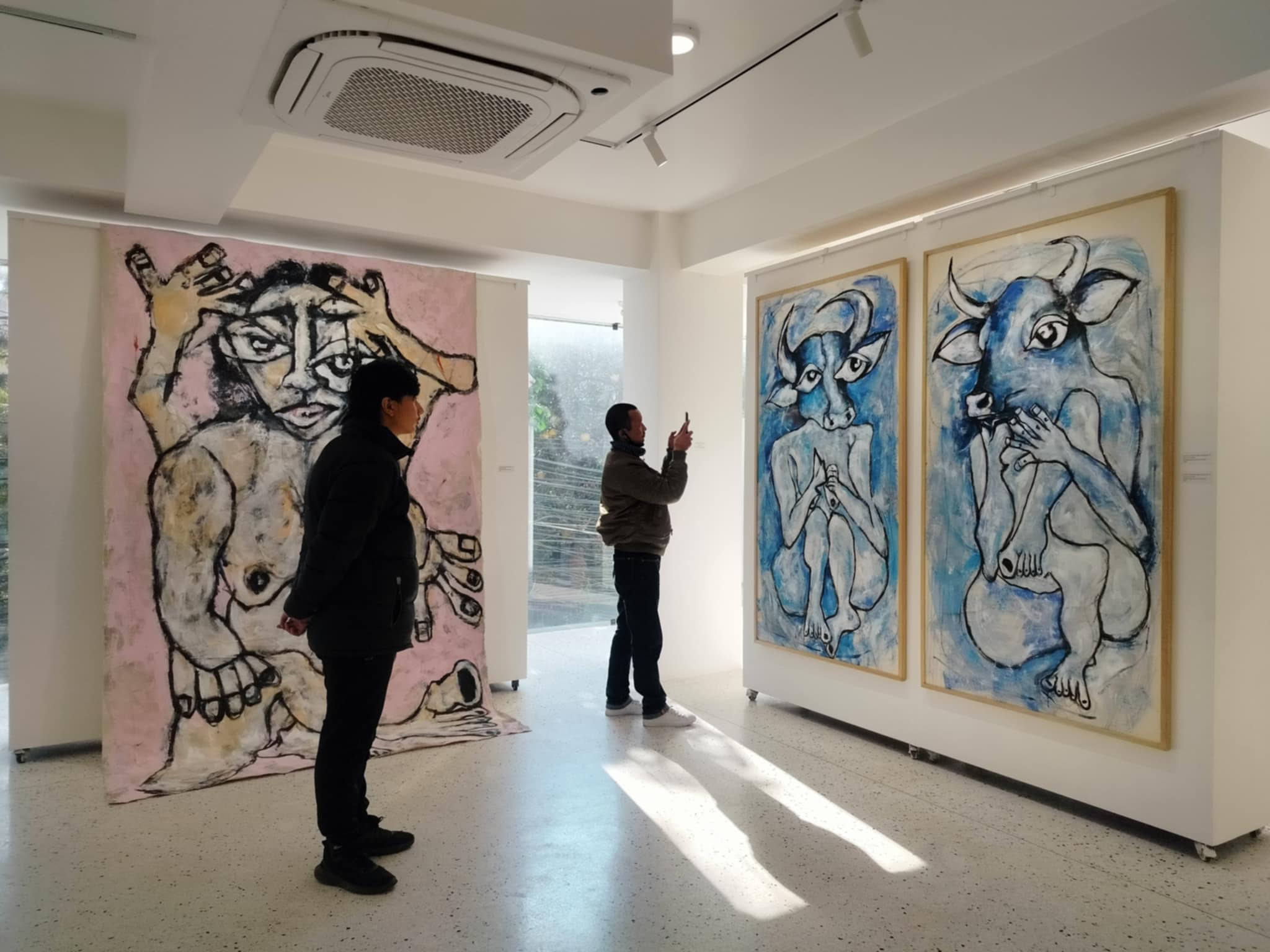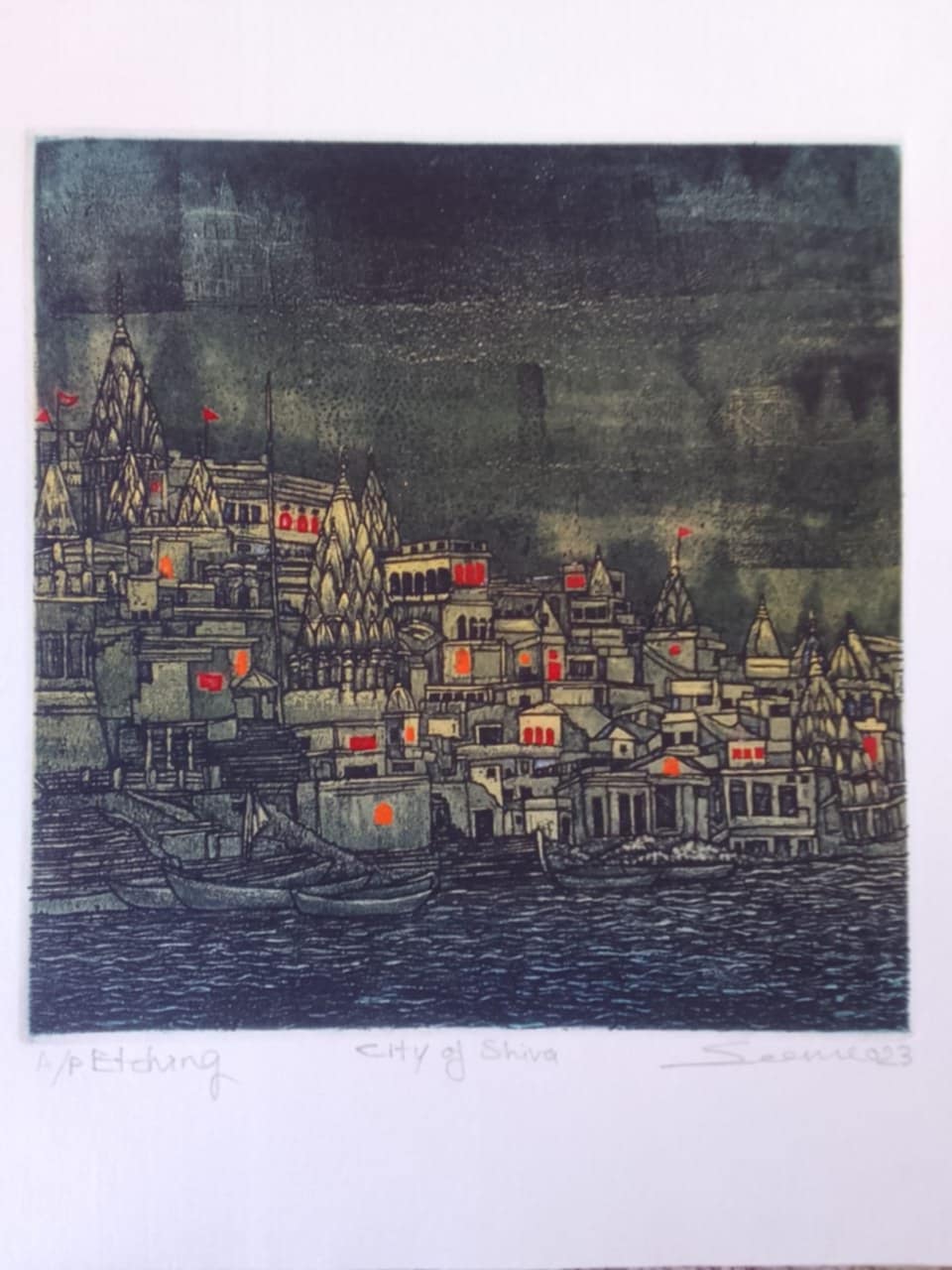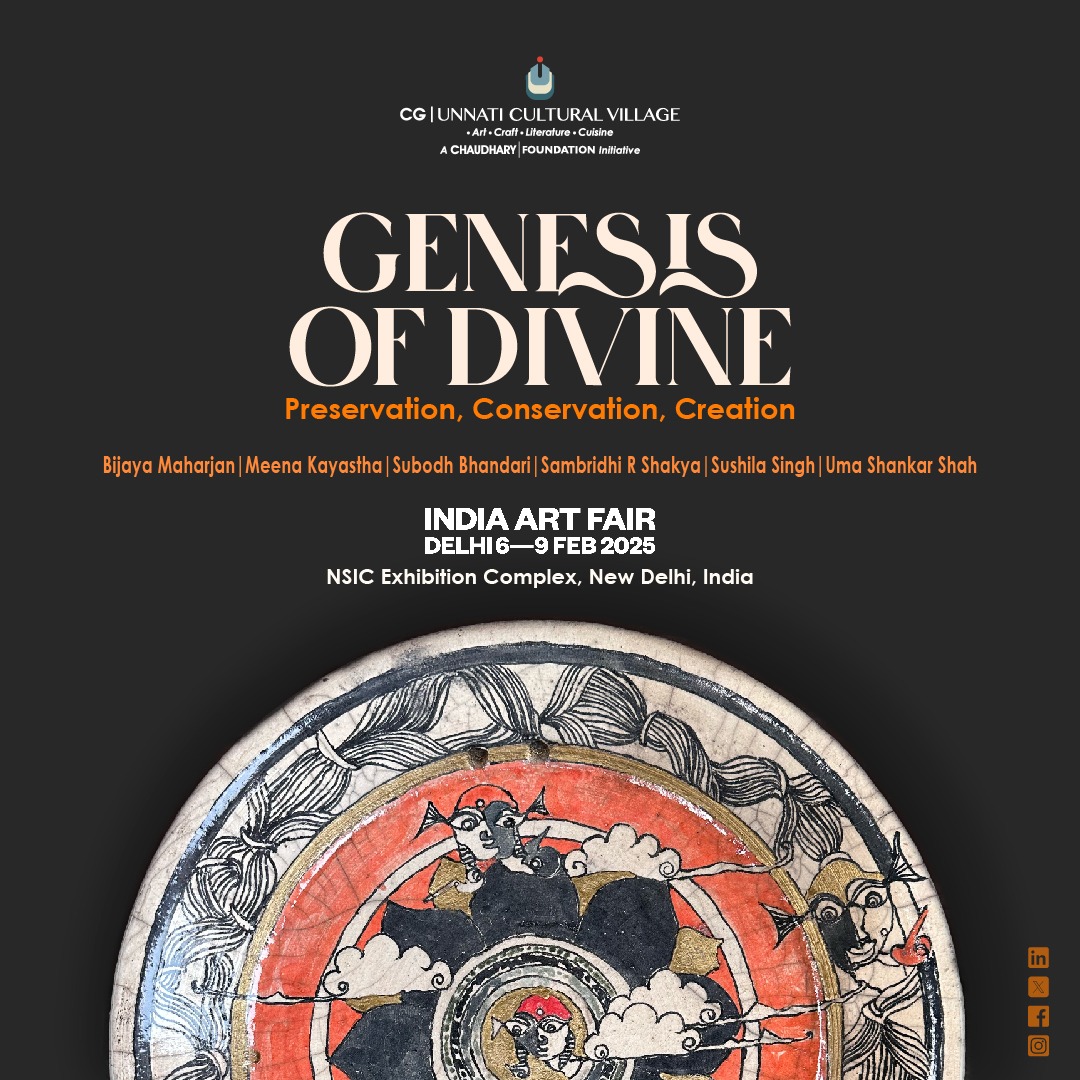
Kathmandu, January 14
Unnati, a unique initiative by the Chaudhary Foundation, is dedicated to fostering economic growth, preserving heritage, and promoting Nepal’s living knowledge systems.
Continuing its mission to promote Nepali art on international platforms, Unnati Cultural Village will participate in the India Art Fair (IAF) 2025 from February 6–9 at Booth No. K04. According to a press statement released by Unnati, this marks Unnati’s second consecutive appearance at the fair, showcasing approximately 21 exceptional works by six talented Nepali contemporary artists under the theme “Genesis of Divine”.
It adds that the featured artists—Bijaya Maharjan, Meena Kayastha, Subodh Bhandari, Sambriddhi R Shakya, Sushila Singh, and Uma Shankar Shah—explore Nepal’s cultural and spiritual legacy through diverse mediums such as prints, ceramics, installations, sculptures, and junk art. These creations reflect a blend of Nepal’s historical richness and contemporary artistic evolution, reinforcing the importance of heritage preservation.
Artistic highlights: Genesis of Divine
Their creations are interwoven into a story that highlights the significance of Nepali cultural heritage and the artistic legacy of Nepali artisans.
Bijaya Maharjan

The series of contemporary sculptures in bronze dedicated to Ajima, the revered Newa goddess of motherhood and protection, Maharjan conveys the divine energy, strength, warmth and compassion that AJIMA embodies. Through the work and process he aims to celebrate the essence of divine feminine, inviting viewers to experience the same sense of connection, protective grace and inspiration which guided him during the creation.
Meena Kayastha

Meena invites viewers to reflect on the eternal rhythms of creation, preservation, and destruction that permeate all existence by blending the symbolism of the divinity with sustainable practices. She also hopes to provoke thought about the interconnectedness of all things, encouraging a deeper understanding of the divine processes that are ever-present into our lives. Her works are the testament to the belief that the art is immortal, especially when it draws from the overlooked and the forgotten, transforming them into something sacred and enduring. Meena’s current work, inspiring her to delve into these divine functions through her work. The project centers on a traditional Newari wooden door, a century old, serving as both canvas and symbol. This door, weathered by time yet enduring, represent the passage of life’s phase- a metaphor for the cycles of creation, preservation, and destruction that govern both the cosmos and individual experiences.
Sambridhi R Shakya and Subodh Bhandari

Sambriddhi and Subodh are young, emerging, and visionary artists who collaborate to create thought-provoking art installations inspired by Nepali historical monuments. Their works, while contemporary in approach, resonate deeply with the themes of preserving Nepali art and architecture.
Through their installations, they breathe new life into traditional elements such as historical windows, doors, “Khopas” or niches, and other architectural details, offering a unique dialogue between the past and present. Their artistry not only reflects their innovative mindset but also highlights the significance of safeguarding Nepal’s rich cultural heritage.
Sushila Singh

Sushila’s fundamental element in this artistic journey is clay, a primordial substance that embodies the essence of the earth. In her work as a medium, clay signifies not just one of the five elemental forces, but also malleability and transformation. The clay serves as the canvas for narratives of self-discovery. The ceramic pieces are embellished with detailed doodles in gold and gray, colors chosen for their profound symbolic meaning. Gold, which is typically connected with divinity, blends with gray, the hue of contemplation, and emptiness.
Uma Shankar Shah

Uma Shankar’s print series, Ramayan, is a visual retelling of the epic Ramayana, deeply rooted in the artist’s hometown of Janakpur. The series explores the life of Sita, the beloved princess and daughter of King Janak, from her birth and engagement to Lord Ram, to her banishment, kidnapping, and eventual rescue. Anchored in Mithila tradition and folklore, the prints feature elements of local culture, such as Sita’s wedding in a kohabar ghar and her boat guided by fish. The artist’s use of vibrant colors and the iconic doe-like eyes typical of Mithila art enriches the narrative. Through symbols of warfare and the traditional firework puppet of Ravana, Uma Shankar evokes the victory of good over evil, drawing on regional languages and Ramayana slokas to bring the epic to life.







